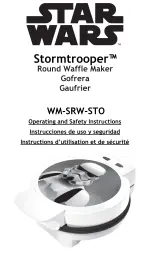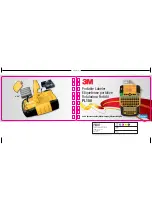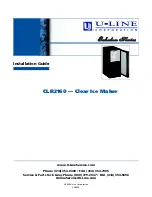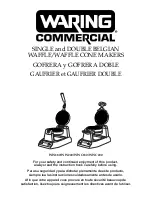
Basic ingr
edients
and pr
eparations
15
Br
ead-making ingr
edients
Water
Sugar
Granulated sugar, brown sugar
and honey
Sugar is the nutrition for bread yeast which
can speed up the fermentation. It can also
improve taste, smell and crust of breads.
●
Cold water is used for the following recipes
(about 5 °
C
: almost the temperature of icy
water)
●
Alkaline water is not applicable.
For making bread
Effects
Effects
Key
points
Key
points
●
Increase the amount of sugar to darken
the crust; decrease the amount to
lighten the crust.
●
Do not use the low-calorie sugar substitute.
●
Big sugar particles shall be pulverized.
●
Do not use rock sugar and other crystal sugar.
Granulated
sugar
Baking powder
*
Even adding it into bread and soft bread would
not make it swell.
For making scones and cakes.
*
About gluten
The substances resulted from combinations of the proteins
in flour and water.
Bread-making yeast generates carbon dioxides to inspire the
extention of the dough, hence finally generates the textures of
the bread.
*
As rice flour bread contains wheat
(gluten), it is not recommended for
people who are allergic to wheat.
*
Be sure to pay attention to the
ingredients, cleaning methods, and
maintenance. Use after consulting
your doctor.
Gluten is produced by adding water in flour.
French bread
Other menus while
roome temperature
is above 25 °
C
Rapid bread
Whole weat bread
Stuffed bread
Rice flour
Tips
Key
points
Rice flour does not contain the proteins
necessary for dough swelling. Therefore, it is
impossible to make bread if only rice flour are
added.
It is important to use different flour according
to the various menu.
Please note the following to avoid damaging the
fluorine coating of the bread pan and blade:
●
Adding hard ingredients may cause the fluorine coating
to peel off.
●
For large crystalline particles such as coarse sugars
and sea salts, melt them down in the room temperature
water before use.
●
Insufficient water may lead to dough hardening, thus
damaging the coating during dough kneading.
●
Be sure to put ingredients into the bread pan in the
following order: flour —
> other ingredients —
> water.
●
Do not use hard items such as knives, forks and
chopsticks to take out the bread.
●
Always check whether the blade is attached in the
bread (at the bottom) before cutting the bread to avoid
damaging the blade.
*
Eating the peeled-off fluorine coating does not affect
health.
●
The water of which the hardness is within 50~200 should
be the most appropriate in this case.
*
The hardness of the water is calculated from its calcium
and magnesium content. Water of moderate hardness can
improve the dough elasticity and the bread swelling effect.
If the water is too hard, the bread will be harder.
●
Distilled water is not applicable for bread swelling.
















































